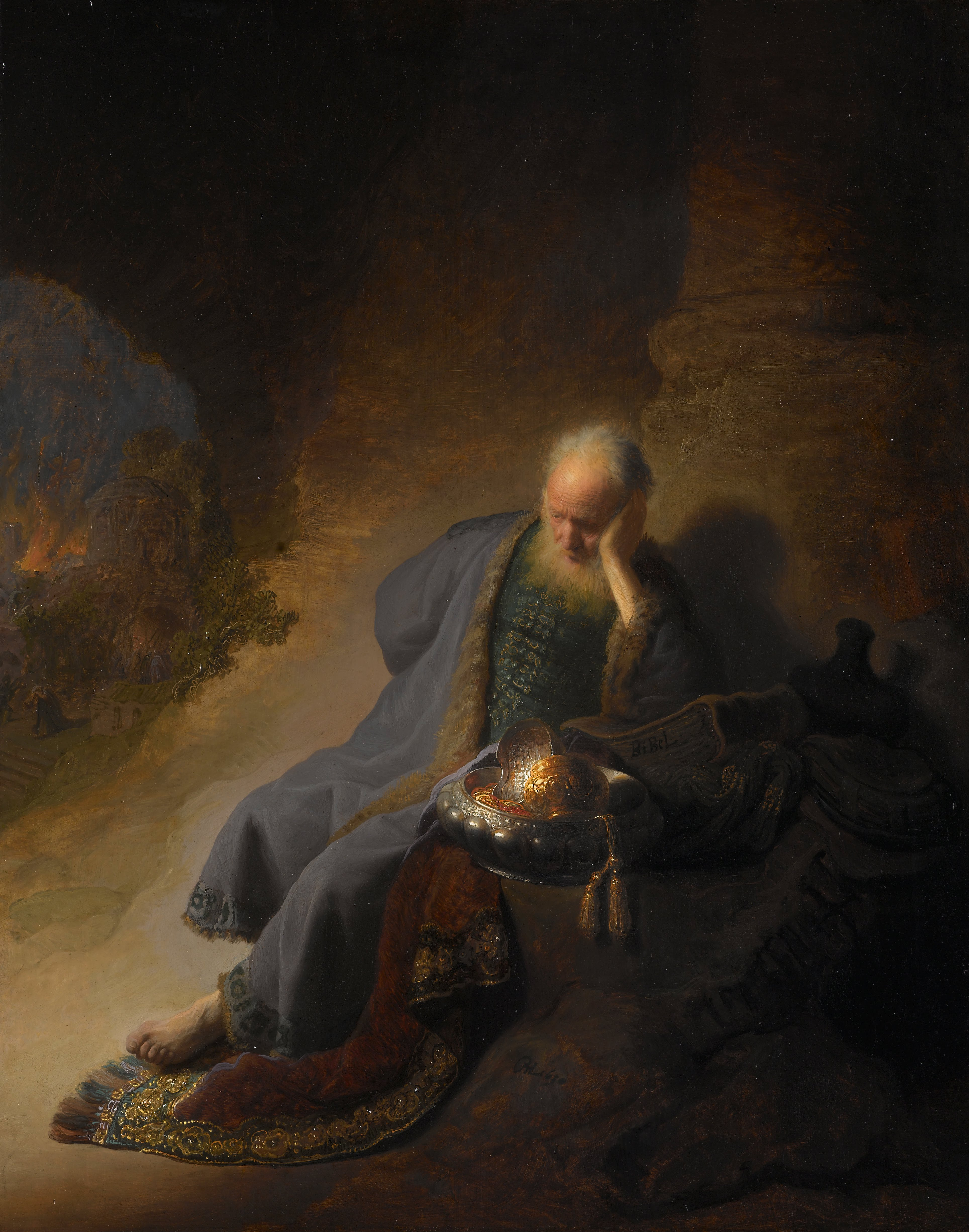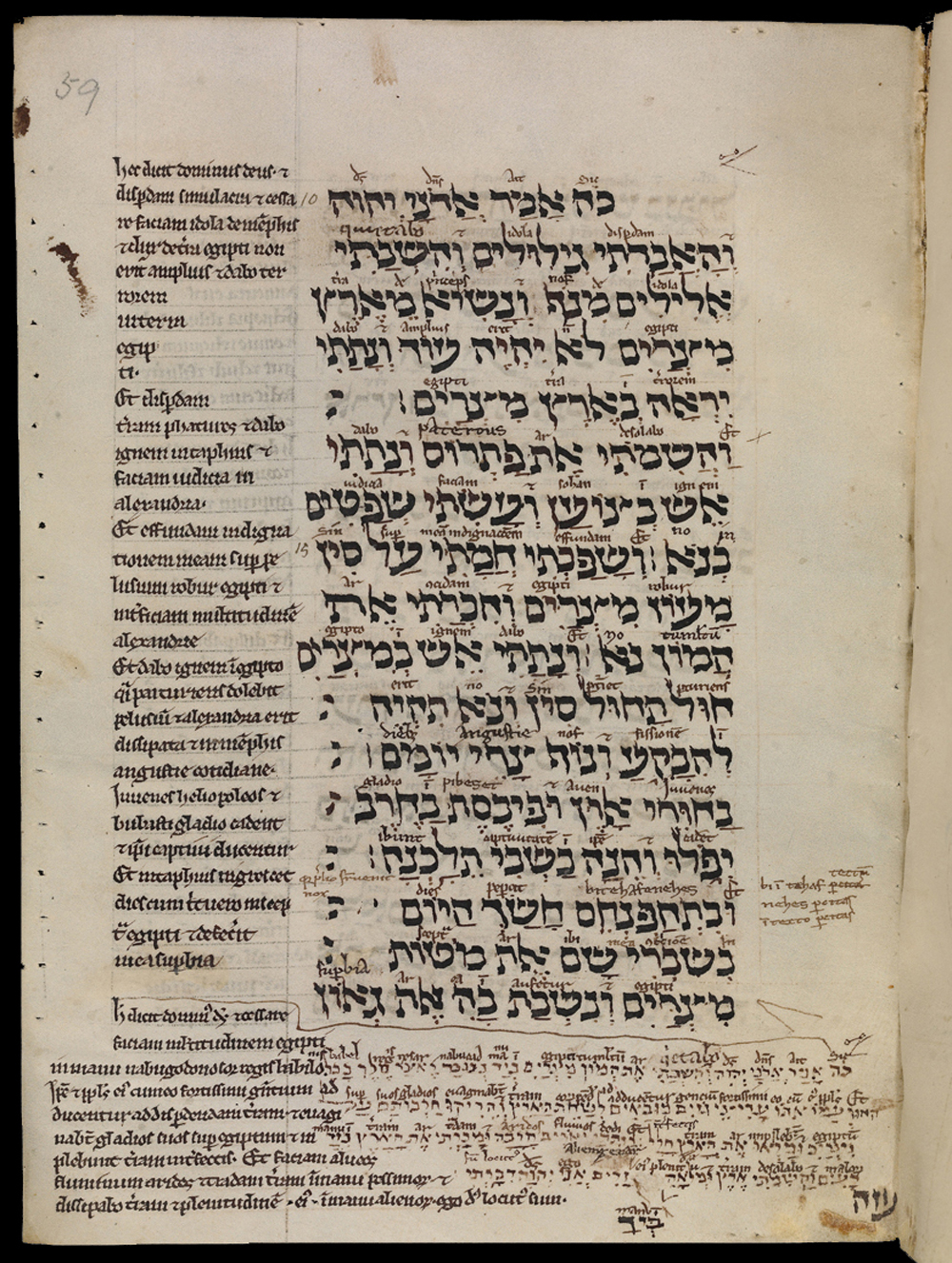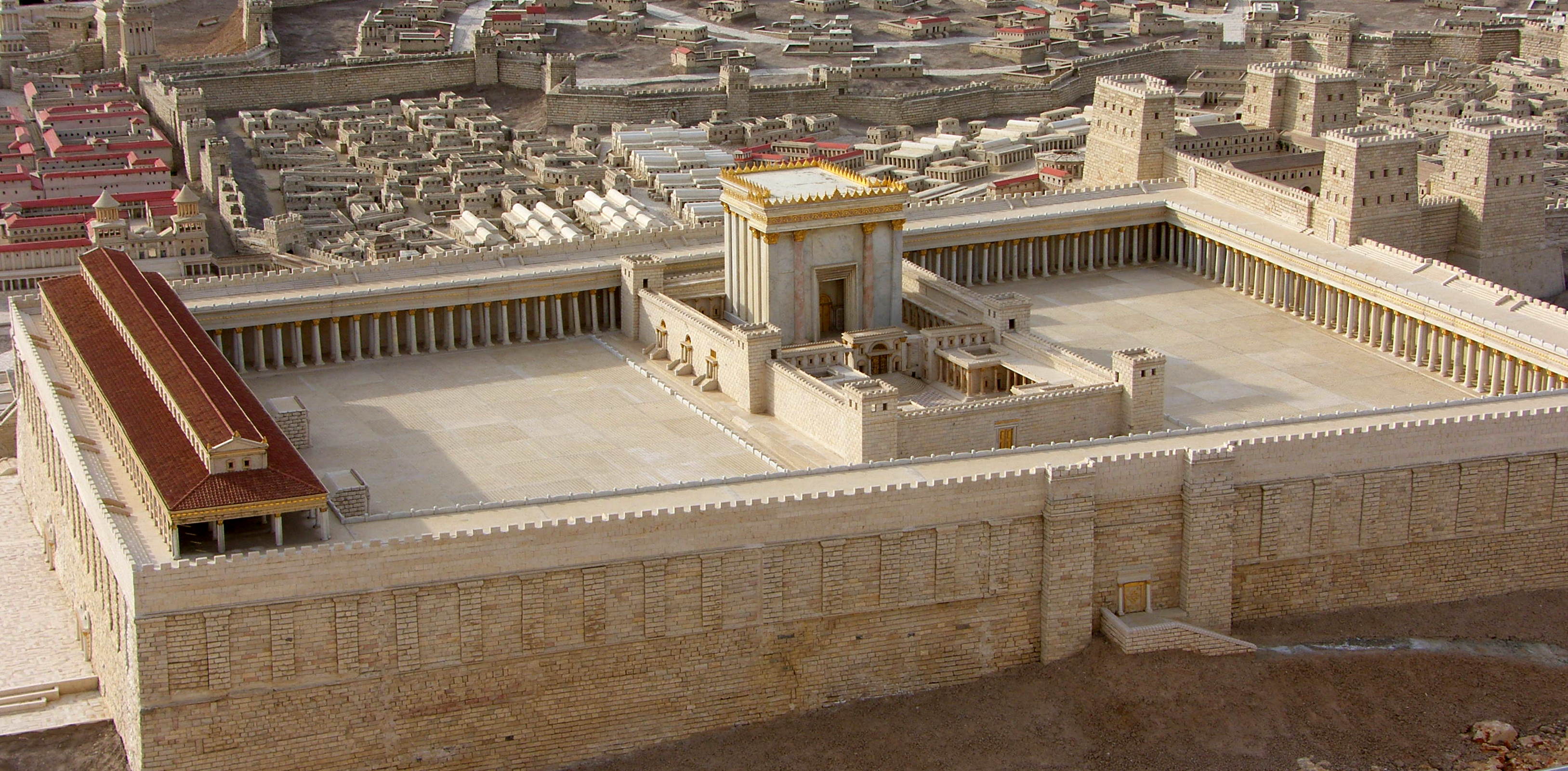|
10th Of Tevet
Tenth of Tevet (), or ''Asarah BeTevet'' (), the tenth day of the Hebrew month of Tevet, is a fast day in Judaism. It is one of the minor fasts observed even in erev Shabbat from before dawn to nightfall, while other fast days are then postponed after Shabbat. The fast mourns the 587 BCE siege of Jerusalem by Nebuchadnezzar II of Babylonia—an event that began on that date and ultimately culminated in the destruction of Solomon's Temple (i.e., the First Temple), the downfall of the Kingdom of Judah, and the Babylonian exile of the Judeans. The fast day is not related to Hanukkah but happens to follow that festival by a week. Whether the 10th of Tevet occurs seven or eight days after the last day of Hanukkah depends on whether the preceding Hebrew month of Kislev has 29 or 30 days in the given Hebrew year. History According to 2 Kings 25:1–25, on the 10th day of the 10th month of Tevet,Counting from Nisan, per See . in the ninth year of Zedekiah's reign (588 BCE), Nebu ... [...More Info...] [...Related Items...] OR: [Wikipedia] [Google] [Baidu] |
Hebrew Language
Hebrew (; ''ʿÎbrit'') is a Northwest Semitic language within the Afroasiatic language family. A regional dialect of the Canaanite languages, it was natively spoken by the Israelites and remained in regular use as a first language until after 200 CE and as the liturgical language of Judaism (since the Second Temple period) and Samaritanism. The language was revived as a spoken language in the 19th century, and is the only successful large-scale example of linguistic revival. It is the only Canaanite language, as well as one of only two Northwest Semitic languages, with the other being Aramaic, still spoken today. The earliest examples of written Paleo-Hebrew date back to the 10th century BCE. Nearly all of the Hebrew Bible is written in Biblical Hebrew, with much of its present form in the dialect that scholars believe flourished around the 6th century BCE, during the time of the Babylonian captivity. For this reason, Hebrew has been referred to by Jews as '' ... [...More Info...] [...Related Items...] OR: [Wikipedia] [Google] [Baidu] |
Nisan
Nisan (or Nissan; from ) in the Babylonian and Hebrew calendars is the month of the barley ripening and first month of spring. The name of the month is an Akkadian language borrowing, although it ultimately originates in Sumerian ''nisag'' "first fruits". In the Hebrew calendar it is the first month of the ecclesiastical year, called the "first of the months of the year" ( Exodus 12:1-2), "first month" (Ex 12:14), and the month of '' Aviv'' (Ex 13:4) ''ḥōḏeš hāʾāḇîḇ''). It is called Nissān in the Book of Esther. It is a month of 30 days. In the year 2025, 1 Nisan will occur on 30 March. Counting from 1 Tishrei, the civil new year, it would be the seventh month (eighth, in leap year), but in contemporary Jewish culture, both months are viewed as the first and seventh simultaneously, and are referred to as one or the other depending on the specific religious aspects being discussed. Name and origin The biblical Hebrew months were given enumerations instea ... [...More Info...] [...Related Items...] OR: [Wikipedia] [Google] [Baidu] |
Selichot
Selichot (, singular: , ''səliḥā'') are Jewish penitential poems and prayers, especially those said in the period leading up to the High Holidays, and on fast days. The Thirteen Attributes of Mercy are a central theme throughout these prayers. Selichot of the High Holidays In the Sephardic tradition, recital of Selichot in preparation for the High Holidays begins on the second day of the Hebrew month of Elul. In the Ashkenazi tradition, in years where the first day of Rosh Hashanah begins on a Thursday or Saturday, selichot are recited from the Saturday night before Rosh Hashanah. If, however, the first day of Rosh Hashanah falls on a Monday or Tuesday, selichot are recited from the Saturday night more than a week before Rosh Hashanah to ensure that it is recited at least four times. This may be because originally the pious would fast for ten days during the season of repentance, and four days before Rosh Hashanah were added to compensate for the four of the Ten Da ... [...More Info...] [...Related Items...] OR: [Wikipedia] [Google] [Baidu] |
Liturgy
Liturgy is the customary public ritual of worship performed by a religious group. As a religious phenomenon, liturgy represents a communal response to and participation in the sacred through activities reflecting praise, thanksgiving, remembrance, supplication, or repentance. It forms a basis for establishing a relationship with God. Technically speaking, liturgy forms a subset of ritual. The word ''liturgy'', sometimes equated in English as " service", refers to a formal ritual enacted by those who understand themselves to be participating in an action with the divine. Etymology The word ''liturgy'' (), derived from the technical term in ancient Greek (), ''leitourgia'', which means "work or service for the people" is a literal translation of the two affixes λήϊτος, "leitos", derived from the Attic form of λαός ("people, public"), and ἔργον, "ergon", meaning "work, service". In origin, it signified the often expensive offerings wealthy Greeks made in serv ... [...More Info...] [...Related Items...] OR: [Wikipedia] [Google] [Baidu] |
Book Of Jeremiah
The Book of Jeremiah () is the second of the Latter Prophets in the Hebrew Bible, and the second of the Prophets in the Christian Old Testament. The superscription at chapter Jeremiah 1#Superscription, Jeremiah 1:1–3 identifies the book as "the words of Jeremiah son of Hilkiah". Of all the prophets, Jeremiah comes through most clearly as a person, ruminating to his scribe Baruch ben Neriah, Baruch about his role as a servant of God with little good news for his audience. His book is intended as a message to the Jews in exile in Babylon, explaining the disaster of exile as God's response to Israel's pagan worship: the people, says Jeremiah, are like an unfaithful wife and rebellious children, their infidelity and rebelliousness made judgment inevitable, although restoration and a new covenant are foreshadowed. Authentic oracles of Jeremiah are probably to be found in the poetic sections of Jeremiah 1, chapters 1 through Jeremiah 25, 25, but the book as a whole has been heavily ... [...More Info...] [...Related Items...] OR: [Wikipedia] [Google] [Baidu] |
Book Of Ezekiel
The Book of Ezekiel is the third of the Nevi'im#Latter Prophets, Latter Prophets in the Hebrew Bible, Tanakh (Hebrew Bible) and one of the Major Prophets, major prophetic books in the Christian Bible, where it follows Book of Isaiah, Isaiah and book of Jeremiah, Jeremiah. According to the book itself, it records six visions of the Biblical prophet, prophet Ezekiel, exiled in Babylon, during the 22 years from 593 to 571 BC. It is the product of a long and complex history and does not necessarily preserve the words of the prophet. The visions and the book are structured around three themes: (1) judgment on Israel (chapters 1–24); (2) judgment on the nations (chapters 25–32); and (3) future blessings for Israel (chapters 33–48). Its themes include the concepts of the Divine presence#Judaism, presence of God, purity, Israel as a divine community, and individual responsibility to God. Its later influence has included the development of Mysticism, mystical and apocalyptic tr ... [...More Info...] [...Related Items...] OR: [Wikipedia] [Google] [Baidu] |
Ezekiel 33
Ezekiel 33 is the thirty-third chapter of the Book of Ezekiel in the Hebrew Bible or the Old Testament of the Christian Bible. This book contains the prophecies attributed to the prophet/priest Ezekiel, and is one of the Books of the Prophets. This chapter opens the third and final section of the book, in which God's future blessings on Israel are proclaimed. A "complex interweaving of themes imported from the first twenty-four chapters of the book" is concerned with the concept of responsibility, including Ezekiel's own responsibility as a "watchman" (verse 7), and "the people's responsibility for their own moral and religious choices" (see also chapter 18).Galambush, S., ''Ezekiel'' in Barton, J. and Muddiman, J. (2001)The Oxford Bible Commentary, p. 555 Text The original text was written in the Hebrew language. This chapter is divided into 33 verses. Textual witnesses Some early manuscripts containing the text of this chapter in Hebrew are of the Masoretic Text tradition, ... [...More Info...] [...Related Items...] OR: [Wikipedia] [Google] [Baidu] |
Rosh Hashanah (tractate)
Rosh Hashanah () is the name of a text of Jewish law originating in the Mishnah which formed the basis of tractates in both the Babylonian Talmud and the Jerusalem Talmud of the same name. It is the eighth tractate of the order ''Moed''. The text contains the most important rules concerning the calendar year, together with a description of the inauguration of the months, laws on the form and use of the shofar and laws related to the religious services during the Jewish holiday of Rosh Hashanah. Mishna The Mishnah commences with an account of the four beginnings of the religious and the civil year ( 1:1); it speaks of the four judgement-days of the pilgrim festivals and Rosh ha-Shanah ( 1:2); of the six months in which the messengers of the Sanhedrin announce the month ( 1:3); of the two months, the beginnings of which witnesses announce to the Sanhedrin even on the Sabbath ( 1:4), and even if the moon is visible to every one ( 1:5); Gamliel even sent on the Sabbath for forty ... [...More Info...] [...Related Items...] OR: [Wikipedia] [Google] [Baidu] |
Zechariah 8
Zechariah 8 is the eighth of the 14 chapters in the Book of Zechariah in the Hebrew Bible or the Old Testament of the Christian Bible.Zechariah, Book of This book contains the prophecies attributed to the prophet Zechariah. In the Hebrew Bible it is part of the Book of the Twelve Minor Prophets. This chapter concludes the so-called "First Zechariah", consisting of [...More Info...] [...Related Items...] OR: [Wikipedia] [Google] [Baidu] |
Tisha B'Av
Tisha B'Av ( ; , ) is an annual fast day in Judaism. A commemoration of a number of disasters in Jewish history, primarily the destruction of both Solomon's Temple by the Neo-Babylonian Empire and the Second Temple by the Roman Empire in Jerusalem. Tisha B'Av precedes the end of the three weeks between dire straits. This day is regarded as the saddest day in the Jewish calendar. It is categorized as a day destined for tragedy. Tisha B'Av falls in July or August in the Gregorian calendar. Observances of the day include five prohibitions, most notable of which is a 25-hour fast. The Book of Lamentations, which mourns the destruction of Jerusalem, is read in synagogue, followed by the recitation of '' kinnot'', liturgical dirges that lament the loss of the Temples and Jerusalem. As the day has become associated with remembrance of other major calamities which have befallen the Jewish people, some ''kinnot'' also recall events such as the murder of the Ten Martyrs by the Romans ... [...More Info...] [...Related Items...] OR: [Wikipedia] [Google] [Baidu] |
Siege Of Jerusalem (70 CE)
The siege of Jerusalem in 70 CE was the decisive event of the First Jewish–Roman War (66–73 CE), a major rebellion against Roman rule in the province of Judaea. Led by Titus, Roman forces besieged the Jewish capital, which had become the main stronghold of the revolt. After months of fighting, they breached its defenses, destroyed the Second Temple, razed most of the city, and killed, enslaved, or displaced a large portion of its population. The fall of Jerusalem marked the effective end of the Jewish revolt and had far-reaching political, religious, and cultural consequences. In the winter of 69/70 CE, following a pause caused by the Roman succession war, the campaign in Judaea resumed as Titus led at least 48,000 troops—including four legions and auxiliary forces—back into the province. By spring, this army had encircled Jerusalem, whose population had surged with refugees and Passover pilgrims. Inside the city, rival factions led by John of Gischala, Simon ... [...More Info...] [...Related Items...] OR: [Wikipedia] [Google] [Baidu] |
17th Of Tammuz
The Seventeenth of Tammuz (, Modern: ''Shiv'á Asár beTammúz'', Tiberian ( SBL): ''Šib̲ʿāʿāśār bəṯammuz'')) is a Jewish fast day commemorating the breach of the walls of Jerusalem before the destruction of the Second Temple. It falls on the 17th day of the fourth Hebrew month of Tammuz and marks the beginning of The Three Weeks, a mourning period leading up to Tisha B'Av. The day also traditionally commemorates the destruction of the two tablets of the Ten Commandments and other historical calamities that befell the Jewish people on the same date. History The fast of Tammuz, according to Rabbi Akiva's interpretation, is the fast mentioned in the Book of Zechariah as "the fast of the fourth onth ( Zechariah 8:19). This refers to Tammuz, which is the fourth month of the Hebrew calendar. According to the Mishnah, five calamities befell the Jewish people on this day: #Moses broke the two tablets of stone on Mount Sinai, when he saw the Golden calf; #During ... [...More Info...] [...Related Items...] OR: [Wikipedia] [Google] [Baidu] |





